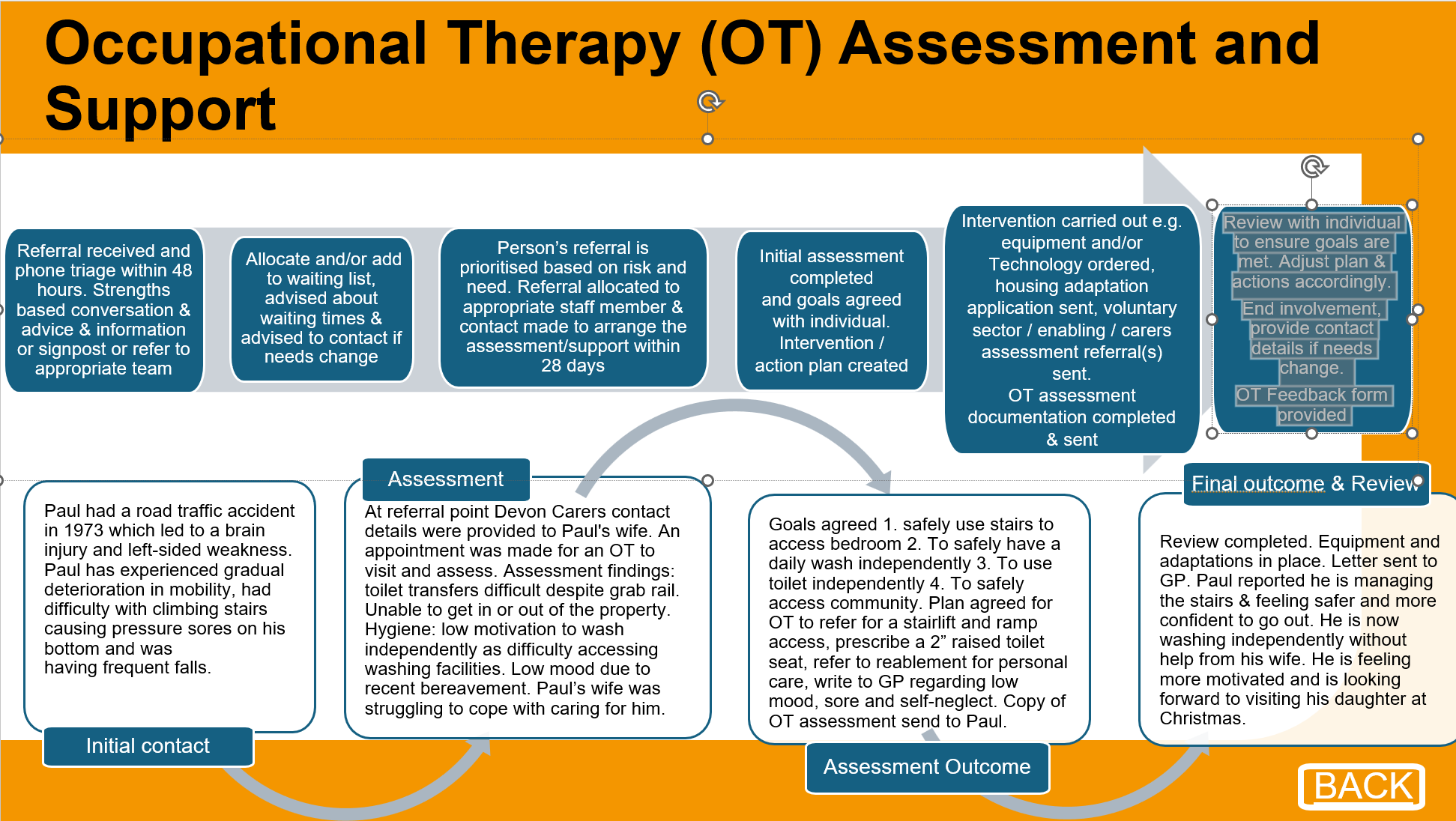
The referral process
Example service user journey
Initial contact
Paul had a road traffic accident in 1973 which led to a brain injury and left-sided weakness. Paul has experienced gradual deterioration in mobility, had difficulty with climbing stairs causing pressure sores on his bottom and was having frequent falls.
↓
Assessment
At referral point Devon Carers contact details were provided to Paul’s wife. An appointment was made for an OT to visit and assess. Assessment findings: toilet transfers difficult despite grab rail. Unable to get in or out of the property. Hygiene: low motivation to wash independently as difficulty accessing washing facilities. Low mood due to recent bereavement. Paul’s wife was struggling to cope with caring for him.
↓
Assessment outcome
Goals agreed 1. safely use stairs to access bedroom 2. To safely have a daily wash independently 3. To use toilet independently 4. To safely access community. Plan agreed for OT to refer for a stairlift and ramp access, prescribe a 2” raised toilet seat, refer to reablement for personal care, write to GP regarding low mood, sore and self-neglect. Copy of OT assessment send to Paul.
↓
Final outcome and review
Review completed. Equipment and adaptations in place. Letter sent to GP. Paul reported he is managing the stairs & feeling safer and more confident to go out. He is now washing independently without help from his wife. He is feeling more motivated and is looking forward to visiting his daughter at Christmas.
Download pathway graphic
Initial contact for information and advice via telephone graphic
Graphic illustrating the pathway where initial contact for information and advice is via telephone.